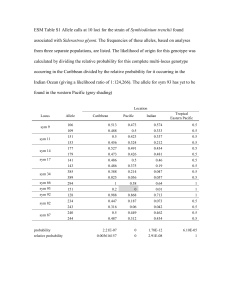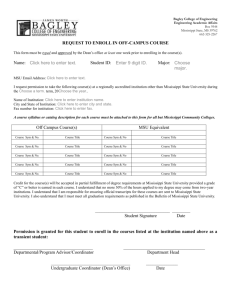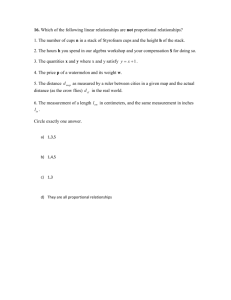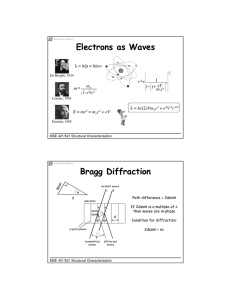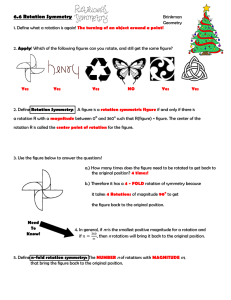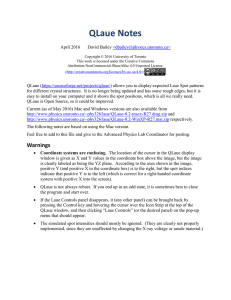Structure Factor MSE 421/521 Structural Characterization
advertisement
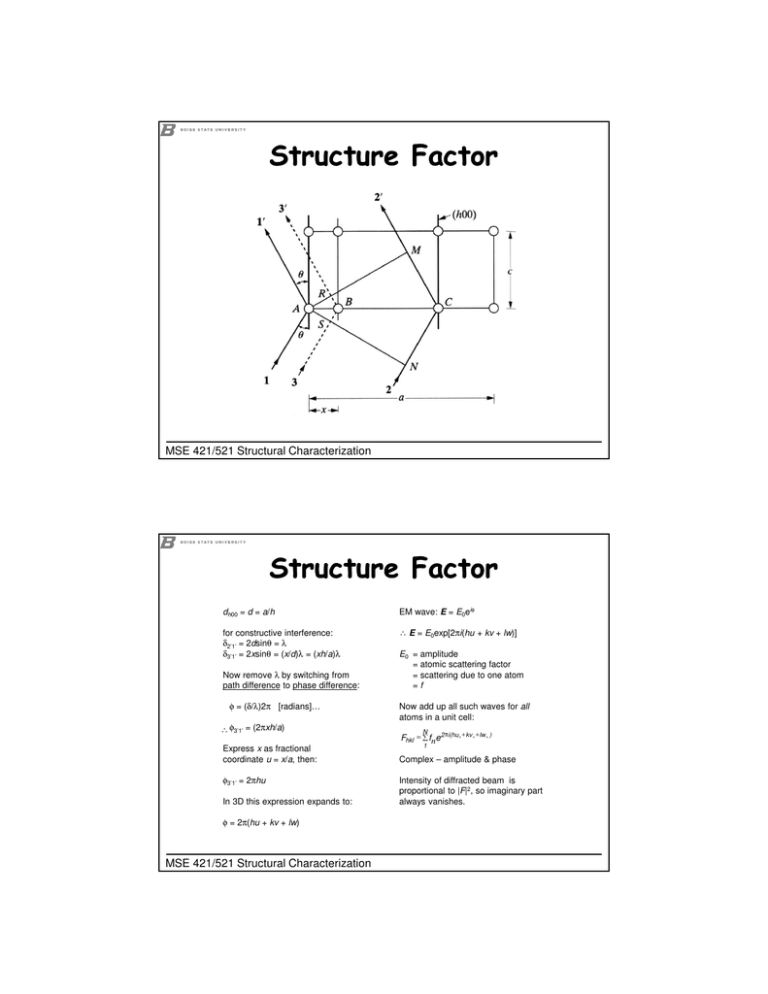
Structure Factor MSE 421/521 Structural Characterization Structure Factor dh00 = d = a/h EM wave: E = E0eiφ for constructive interference: δ2’1’ = 2dsinθ = λ δ3’1’ = 2xsinθ = (x/d)λ = (xh/a)λ ∴ E = E0exp[2πi(hu + kv + lw)] Now remove λ by switching from path difference to phase difference: φ = (δ/λ)2π [radians]… ∴ φ3’1’ = (2πxh/a) Express x as fractional coordinate u = x/a, then: φ3’1’ = 2πhu In 3D this expression expands to: φ = 2π(hu + kv + lw) MSE 421/521 Structural Characterization E0 = amplitude = atomic scattering factor = scattering due to one atom =f Now add up all such waves for all atoms in a unit cell: N Fhkl = ∑ fne 2 πi(hu n + kv n + lw n ) 1 Complex – amplitude & phase Intensity of diffracted beam is proportional to |F|2, so imaginary part always vanishes. Laue Classes Point groups: The 32 symmetries allowed about a fixed point in a crystal, derived by combining all possible combinations of non-translational (point) symmetry elements (rotations, inversions, reflections, etc.). Triclinic Monoclinic 1 1 2 2 m m Orthorhombic 222 mm2 mmm 4 Tetragonal 4 422 4 m Trigonal 3 32 3m 3 6 Hexagonal 6 622 6 m Cubic 23 m3 432 4 3m Sym axis on c 4mm 3m 6mm m3 m 4 2m 4 m mm Sym axes a, b, c Sym axis || c 6m2 6 m mm Sym axis on [111] Sym axis on c 3fold axes on <111> Because diffraction always adds a centre of symmetry, we can only distinguish between the 11 centrosymmetric groups (Laue classes), shown outlined in bold. There are 11 Laue classes, each denoted by the highest point-group symmetry in that class. Diffraction can only distinguish between these 11 Laue classes. MSE 421/521 Structural Characterization
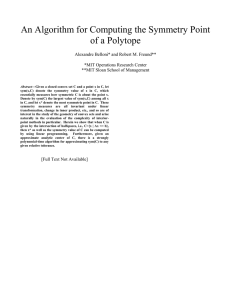
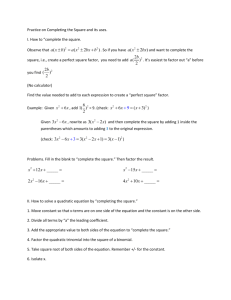
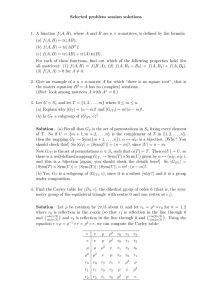

![Zone Axis Zone Axis Identification Zone axis [mnp] Weiss Zone Law:](http://s2.studylib.net/store/data/010544623_1-33810755141931bcda93061771d9f563-300x300.png)
